Last updated on
Discover the perfect rug size for your kitchen table by following our comprehensive guide on choosing the right dimensions and style to elevate your dining experience.
The kitchen is the heart of every home, where families gather to share meals and make memories. And what better way to enhance the warmth and comfort of your kitchen than with a beautiful rug? But choosing the right size can be tricky, especially when it comes to placing a rug under your kitchen table.
A too-small rug will look awkward and out of place, while a too-large one can overwhelm the space. So how do you strike the perfect balance? In this article, we’ll guide you through all you need to know about choosing the right size rug for your kitchen table, so that you can create a cozy and welcoming atmosphere that reflects your personal style.
What's Inside
Importance of Rug Size
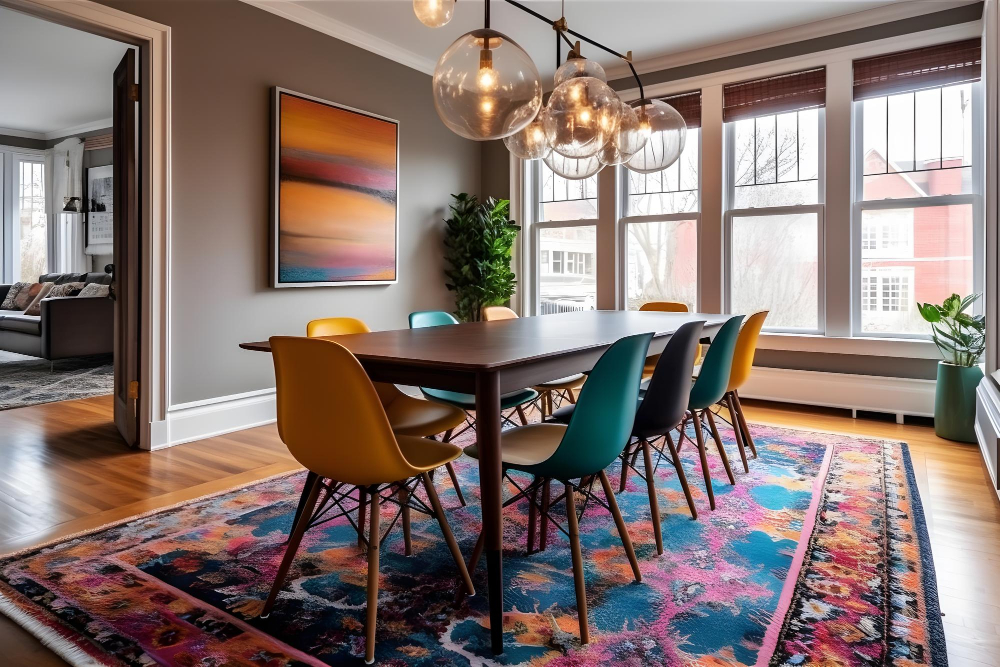
A well-chosen rug can add warmth, texture, and color to a room while also protecting floors from scratches or spills. However, choosing the wrong size can have an adverse effect on the aesthetics of your kitchen.
An undersized rug will make it appear as if something is missing in the room while an oversized one will make it seem cramped and cluttered.
When selecting a rug for under your kitchen table, you want to ensure that there’s enough space around it for chairs to move freely without catching on edges or corners. The right-sized area rugs should be large enough so that when chairs are pulled out from underneath them during mealtime guests’ feet remain firmly planted on them.
Measuring Your Kitchen Space

This will help you determine the right size and shape of rug that will fit perfectly under your table while leaving enough room for chairs to move around comfortably. Start by measuring the length and width of your kitchen area where you plan to place the rug.
If there are any obstacles such as cabinets or islands, make sure to take those into account when measuring.
Once you have these measurements, consider how much floor space should be left uncovered around the edges of the room. A good rule of thumb is to leave at least 18 inches between the edge of your rug and any walls or furniture in order for it not look cramped.
It’s also important to think about traffic flow in this area – if people frequently walk through this part of your kitchen then a smaller sized rug may be more appropriate so that they don’t trip over its edges.
Determining Rug Size for Kitchen Table
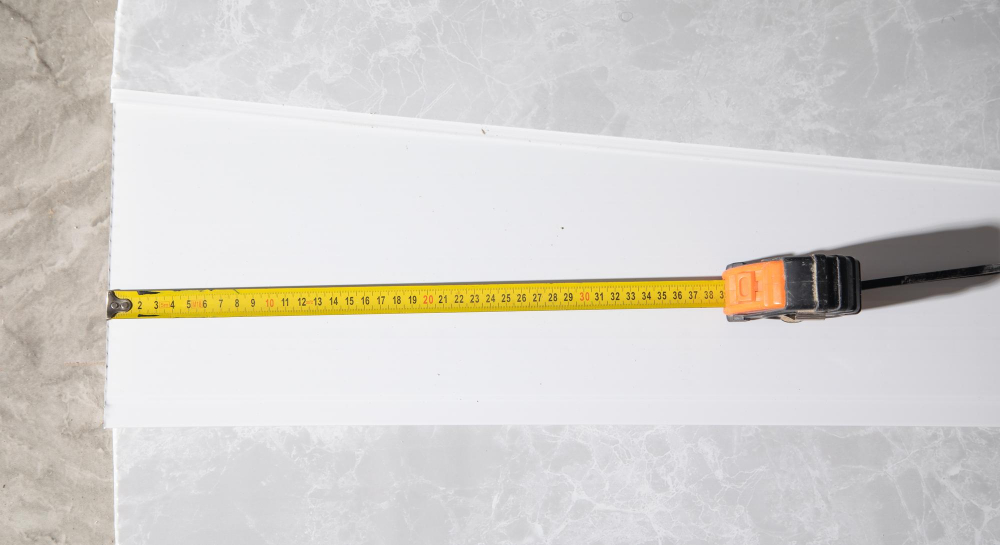
The first step in this process is measuring your kitchen space accurately. Start by measuring the length and width of your dining area, making sure to account for any furniture or appliances that may be in the way.
Once you have these measurements, it’s time to determine how much floor space you want your rug to cover. A general rule of thumb is that there should be at least 24 inches of rug extending beyond each side of the table so that chairs can move freely without catching on the edge.
For rectangular tables, choose a rug size that allows enough room for all chairs when they are pulled out from under it. For round tables, measure its diameter and add at least 36 inches (or more if you have larger chairs) around it so everyone has ample legroom while seated.
Oval-shaped tables require an oval-shaped or rectangular shaped rugs with dimensions similar to those recommended above based on their shape. Square tables need square rugs with sides longer than their edges by about two feet; this will allow enough room between chair legs when people sit down together comfortably without feeling cramped up against one another.
Measuring Your Kitchen Table

This will help you choose a rug that is proportionate and visually appealing in relation to the rest of your kitchen space. Start by measuring the length and width of your table top, including any leaves or extensions that may be added.
Be sure to account for these extra pieces when selecting a rug size.
Once you have measured your table’s dimensions, add at least 24 inches (60 cm) on all sides to ensure there is enough room for chairs to comfortably move in and out without catching on the edge of the rug. This additional space also helps prevent tripping hazards.
Keep in mind that if you have an irregularly shaped or oval-shaped kitchen table, it may be more challenging finding a perfectly fitting rectangular or square-shaped area rug. In this case, consider using round rugs as they can complement such tables well while still providing ample coverage around them.
Rug Size for Rectangular Tables
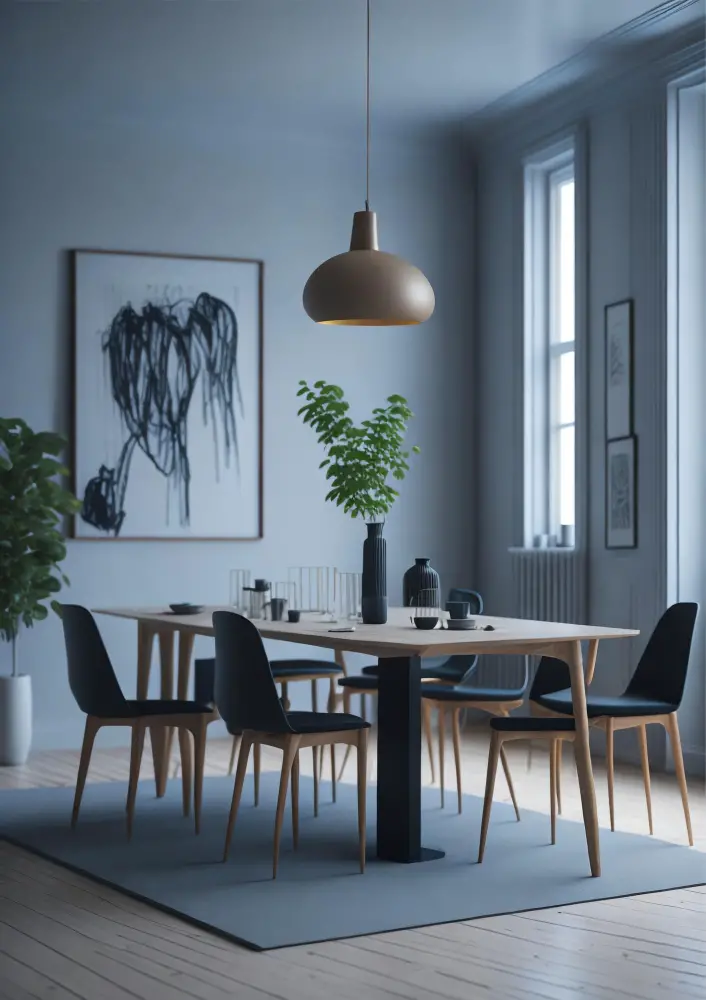
A general rule of thumb is that your rug should extend at least 24 inches beyond each side of the table. This ensures that chairs remain on the rug even when pulled out for seating.
For a standard six-seater rectangular dining table measuring 72 inches long by 36 inches wide, an ideal rug size would be around 8 feet by 10 feet or larger. If you have a smaller space or prefer a more intimate setting, consider using a runner instead.
Remember to measure your room before purchasing any rugs as this will help determine what sizes are available for you and which ones will fit best in your kitchen area.
Rug Size for Round Tables

A round table is often used as a focal point in the room, so it’s important to select a rug that complements its shape and size. To determine the right dimensions for your round table rug, measure the diameter of your table and add at least 36 inches on all sides.
This will ensure that there is enough space for chairs to move freely without catching on the edge of the rug.
If you have an open-plan kitchen with multiple seating areas or if you’re using more than one area rug in your space, consider choosing rugs with different shapes or sizes but complementary colors or patterns. For example, pairing a large rectangular area rug under an adjacent living room seating arrangement while placing smaller circular rugs beneath each dining chair can create visual interest while maintaining continuity throughout.
Rug Size for Oval Tables

The key is to find a rug that complements the shape of your table without overwhelming it. As with rectangular tables, you’ll want to measure both the length and width of your oval table and add at least 2 feet on each side for chair movement.
This will give you an idea of how large your rug should be.
When selecting a rug for an oval kitchen table, consider opting for one that echoes its shape or has soft curves that complement it nicely. A round or elliptical-shaped area rug can work well under an oval dining room set as long as there’s enough space around all sides so chairs don’t catch on corners.
Another option is to choose a rectangular-shaped area run but make sure it’s larger than what would typically fit under this type of furniture piece since ovals tend to take up more floor space due their rounded edges.
Rug Size for Square Tables
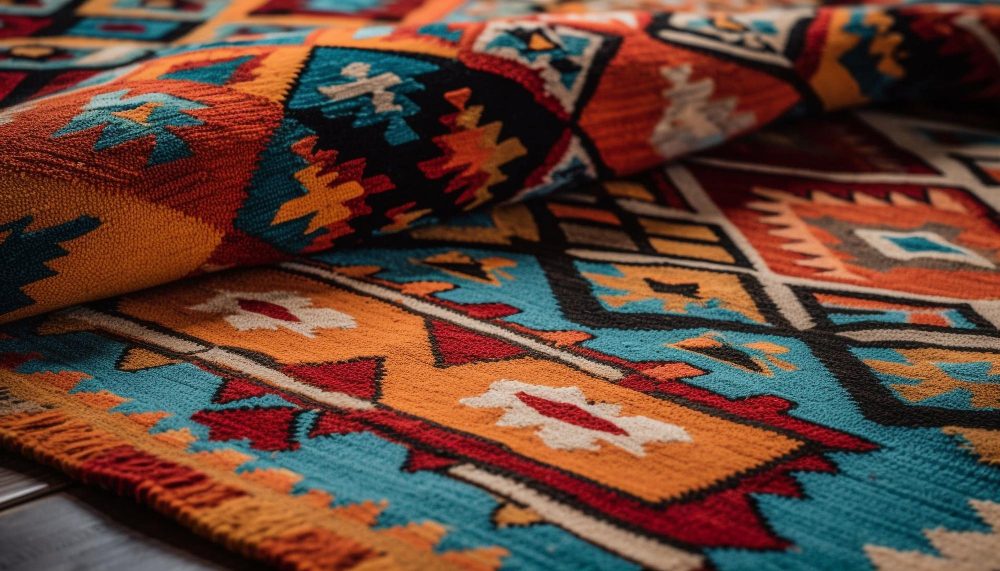
A good rule of thumb is that your rug should extend at least 24 inches beyond each side of your square table. This will ensure that there is enough space for chairs to move in and out without catching on the edge of the rug.
If you have a small kitchen or dining area, consider using a smaller-sized square rug under your table. This can create an intimate and cozy atmosphere while still providing protection for your floors.
On the other hand, if you have a larger kitchen or dining room with ample space around your square table, opt for a larger-sized rectangular or round-shaped rug instead. These shapes can help define different areas within an open-concept living space while adding visual interest and texture.
Factoring in Chair Movement

You don’t want chairs to catch on the edge of a rug or have difficulty sliding back and forth. To avoid this issue, make sure that there is enough space between the edge of your table and where the chairs will sit when pushed in.
A good rule of thumb is to leave at least 24 inches between each side of your table and any walls or other furniture pieces.
Consider how much space you need for people to move around comfortably while seated at the table. If you have a larger family or frequently host dinner parties, opt for a bigger rug that allows ample room for guests’ feet as they scoot their chairs in and out.
Rug Shapes: Round, Square, Rectangular
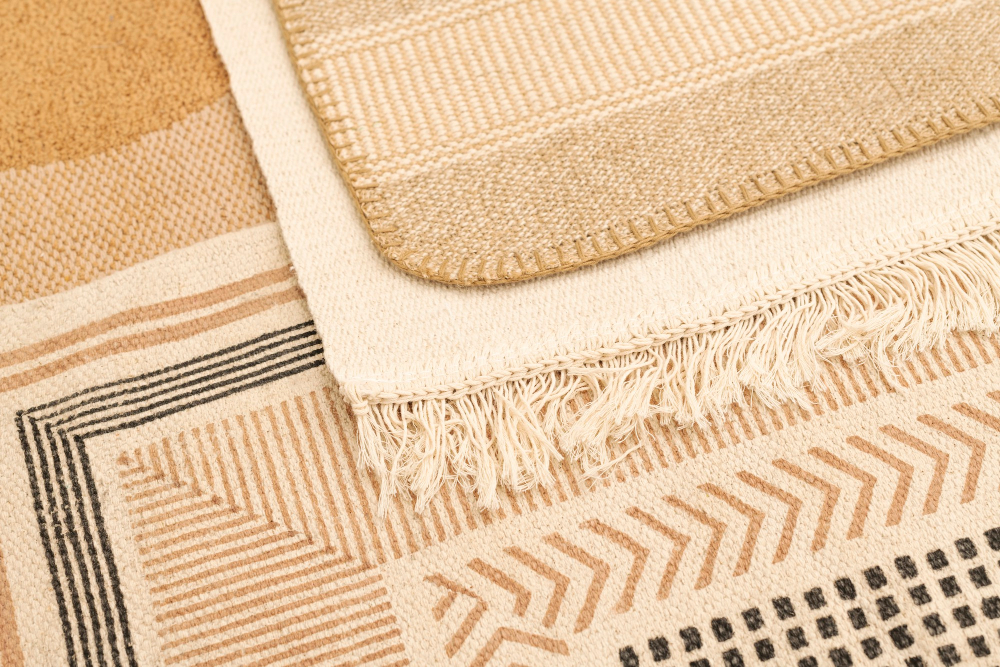
The most common shapes for rugs are round, square, and rectangular. Rectangular rugs tend to be the most popular choice as they fit well with traditional table shapes and can easily define a dining area in an open-plan space.
Square rugs work best under square or round tables while adding symmetry and balance to your room’s design.
Round-shaped kitchen rugs add softness and contrast against angular furniture pieces like rectangular tables or cabinets while creating visual interest in any space. They also help break up straight lines that may dominate other areas of your home.
Choosing the Right Rug Material

First and foremost, you want a rug that is durable and easy to clean since the kitchen is a high-traffic area prone to spills and stains. Natural fibers such as wool or cotton are great options for their durability, but they may not be as stain-resistant as synthetic materials like nylon or polyester.
Another important factor when selecting a rug material is comfort underfoot. You want something soft enough that you can stand on it comfortably while cooking or doing dishes but not so plush that chairs wobble on top of it.
Lastly, consider the overall style of your kitchen when choosing a rug material. If you have an eclectic space with lots of textures and patterns going on already, then opt for something simple like jute or sisal; if your decor leans more towards modern minimalism then go with sleeker materials like leather or vinyl.
Rug Padding Essentials
Rug pads are essential for keeping your rugs in place and preventing slips or falls. They also help protect both your floors and the underside of the rug from damage caused by friction.
When selecting a rug pad, look for one that is slightly smaller than your area rug so that it doesn’t show around the edges. A good quality padding should be thick enough to provide cushioning underfoot but not too thick as to cause tripping hazards.
There are different types of padding materials available such as felt, rubber or foam which can be cut down easily with scissors if needed. Felt pads work well on hardwood floors while rubber ones offer better grip on tile or linoleum surfaces.
Rug Placement Tips
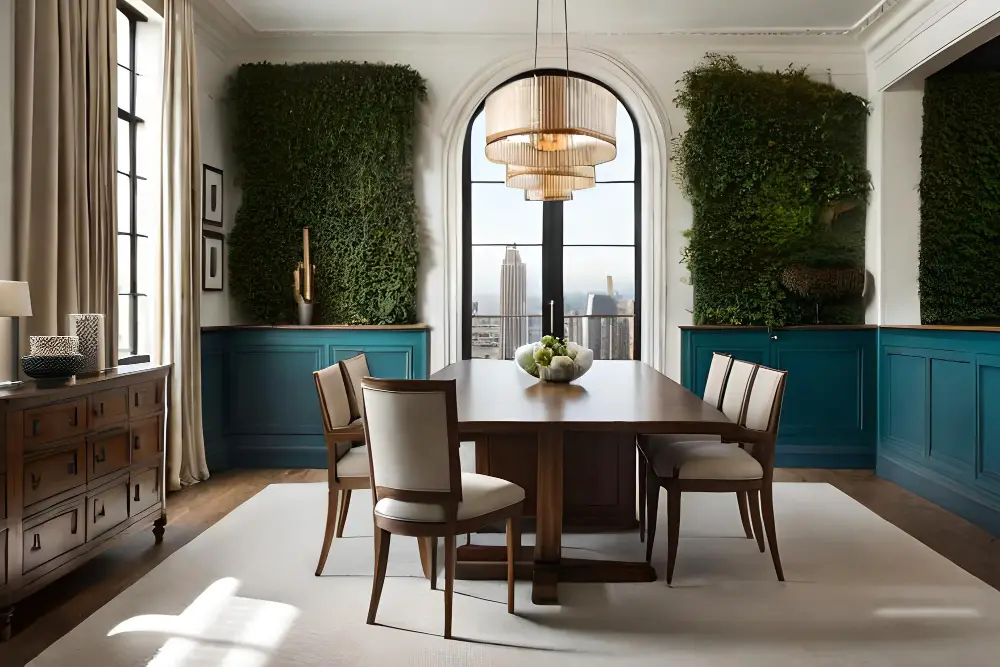
First and foremost, make sure that the rug is centered under the table. This will create balance in your space and ensure that everyone sitting at the table has enough room for their chairs.
Another important tip is to leave enough space between the edge of your rug and any walls or cabinets in your kitchen. A good rule of thumb is to leave at least 18 inches of floor space around all sides of your rug.
If you have an open-concept kitchen with multiple seating areas or walkways nearby, consider using two smaller rugs instead of one large one. This will allow you to define separate zones within your space while still maintaining visual continuity.
Matching Rug and Table Styles
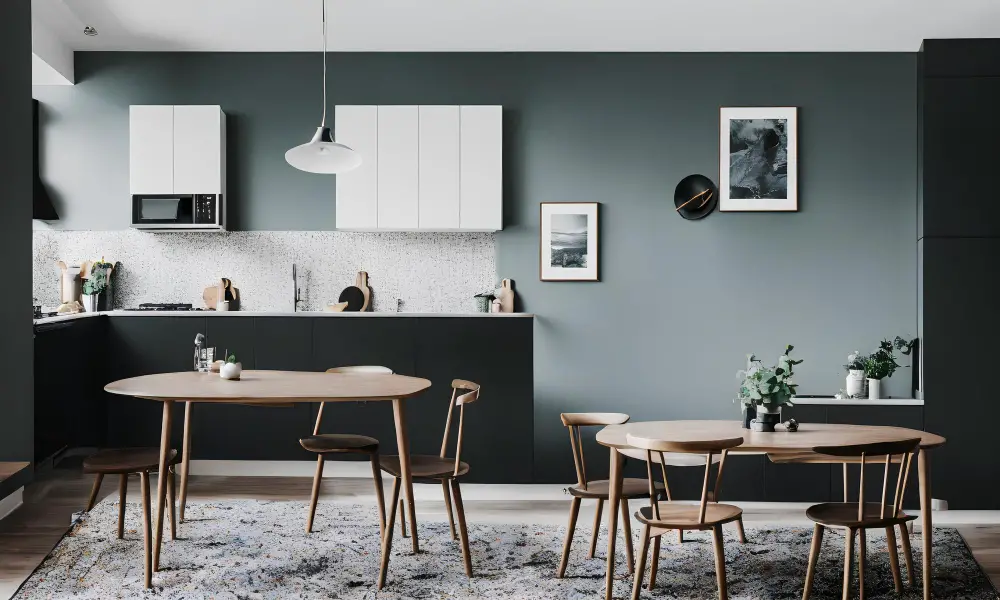
If you have a modern or minimalist kitchen, consider opting for a simple and understated rug with clean lines and neutral colors. On the other hand, if your kitchen has more traditional or rustic elements, look for rugs with intricate patterns or warm earthy tones.
Another important factor to consider is how well your chosen rug matches with your table’s style. For example, if you have an antique wooden dining table in rich mahogany hues, pairing it with a bold geometric patterned area rug might clash rather than complement each other.
Instead opt-in for something like natural fiber jute rugs which will add texture without overwhelming its surroundings while also providing durability against spills and stains from food-related accidents.
Kitchen Table Rug Maintenance

Regular cleaning is essential to keep your rug looking fresh and new. For daily maintenance, vacuuming or sweeping the rug will help remove dirt and debris that can accumulate over time.
Spills should be cleaned up immediately with a damp cloth or paper towel before they have a chance to set in.
For deeper cleaning, professional services are recommended every 12-18 months depending on usage frequency. Avoid using harsh chemicals or abrasive cleaners as these can damage the fibers of your rug.
Another way to extend the life of your kitchen table rug is by rotating it periodically so that wear patterns are distributed evenly across its surface area.
Room Layout and Rug Placement
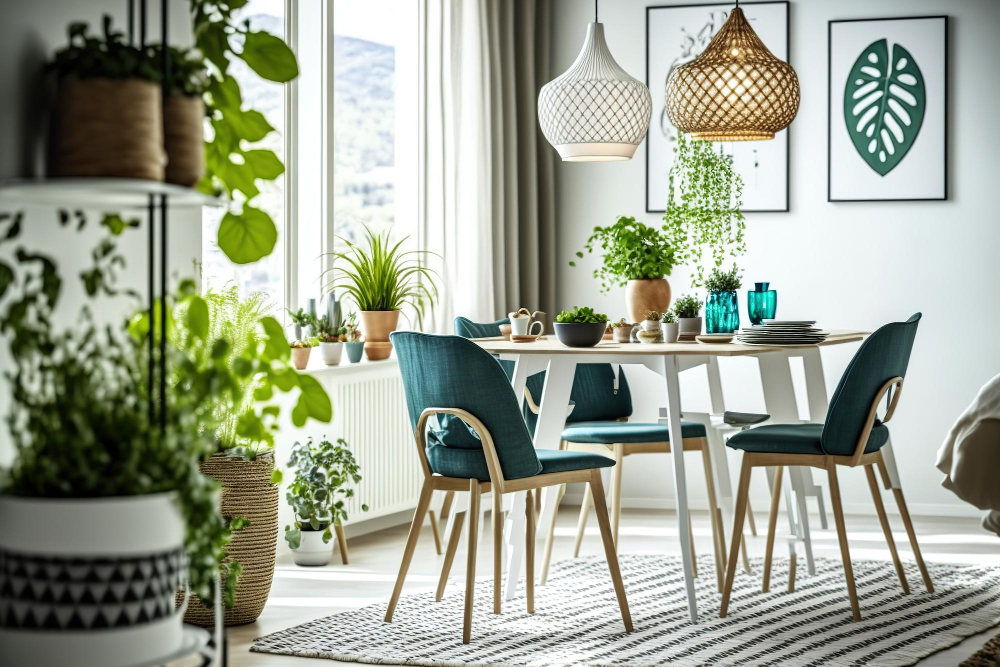
The position and size of windows, doors, and furniture can all affect how you should place your rug. For example, if you have a small kitchen with limited space for movement around the table, consider choosing a round or oval-shaped rug that will fit snugly under the table without extending too far beyond its edges.
On the other hand, if you have more space to work with and want to create an open feel in your kitchen area while still defining it as separate from other areas in an open floor plan home design; try using rectangular rugs placed perpendicular or parallel to walls depending on their placement relative to doorways leading into adjacent rooms.
Budget-Friendly Rug Choices
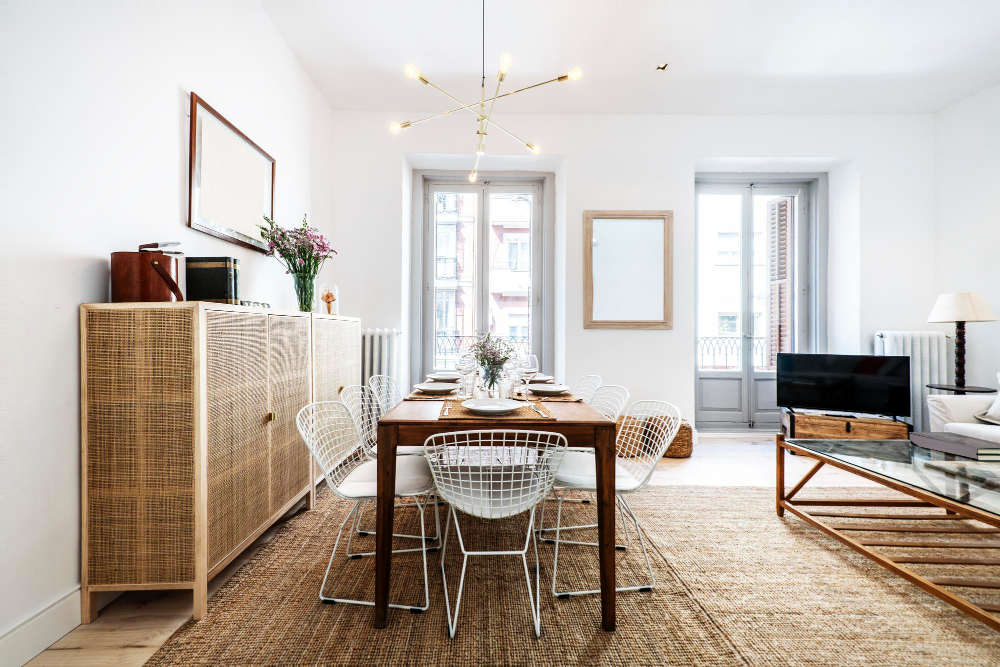
Fortunately, there are plenty of affordable rug options that can add style and comfort to your kitchen without breaking the bank. One option is to look for synthetic materials like nylon or polyester, which offer durability and stain resistance at a lower cost than natural fibers like wool or cotton.
Another way to save money on rugs is by shopping secondhand. Thrift stores and online marketplaces often have gently used rugs available at a fraction of their original price.
Just be sure to inspect the rug carefully for any damage before making your purchase.
If you’re feeling crafty, you could even try making your own DIY rug using inexpensive materials like canvas drop cloths or woven placemats stitched together in an interesting pattern.
DIY Rug Size Solutions
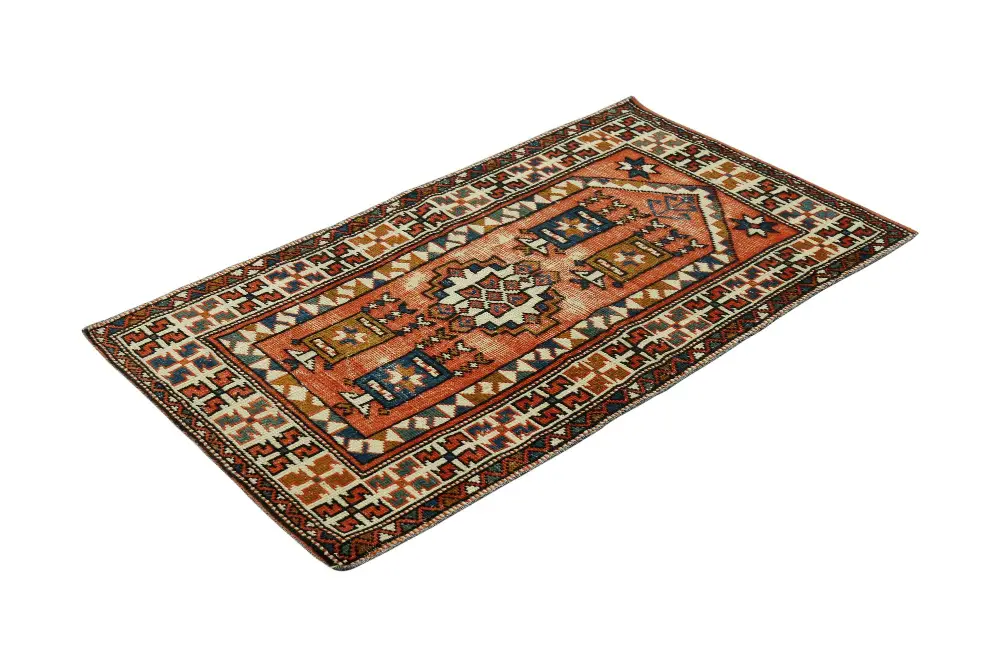
One option is to purchase an inexpensive carpet remnant and cut it down to size using a utility knife and straight edge. Another idea is to use multiple smaller rugs placed side by side under your table, creating the illusion of one larger piece.
You could also consider repurposing an old bedsheet or drop cloth as a makeshift rug by hemming the edges with fabric tape or sewing them together for added durability.
While these DIY solutions may not be as polished as purchasing a professionally sized rug, they offer flexibility in terms of customization and affordability. Plus, they allow you to get creative with colors and patterns that match your personal style.
FAQ
What size rug is best under kitchen table?
The ideal rug size under a kitchen table is determined by measuring the table and then adding 36 to 48 inches to each measurement, while also considering any extra table leaves in the calculation.
How big should a rug be under a dining table?
The rug size under a dining table should be at least 24 inches larger on all sides than the table, ensuring chairs can move back and providing space for seated guests, while also maintaining a minimum of 12 inches of space between the rug’s edges and the room’s walls.
What size rug for a table that seats 4?
The ideal rug size for a table that seats 4 would be 84-96 inches long and 72-88 inches wide.
How does the shape of the kitchen table impact the rug size selection?
The shape of the kitchen table impacts the rug size selection by influencing the measurements and dimensions required to properly accommodate the table and create a balanced, cohesive look.
How can I accurately measure the space for a rug under the kitchen table?
To accurately measure the space for a rug under the kitchen table, use a tape measure to determine the length and width of the area, considering the rug should extend at least 24 inches beyond the table on all sides.
Are there any design guidelines to consider when choosing a rug size for under a kitchen table?
When choosing a rug size for under a kitchen table, consider design guidelines such as ensuring the rug extends at least 24 inches beyond the table’s edges.




